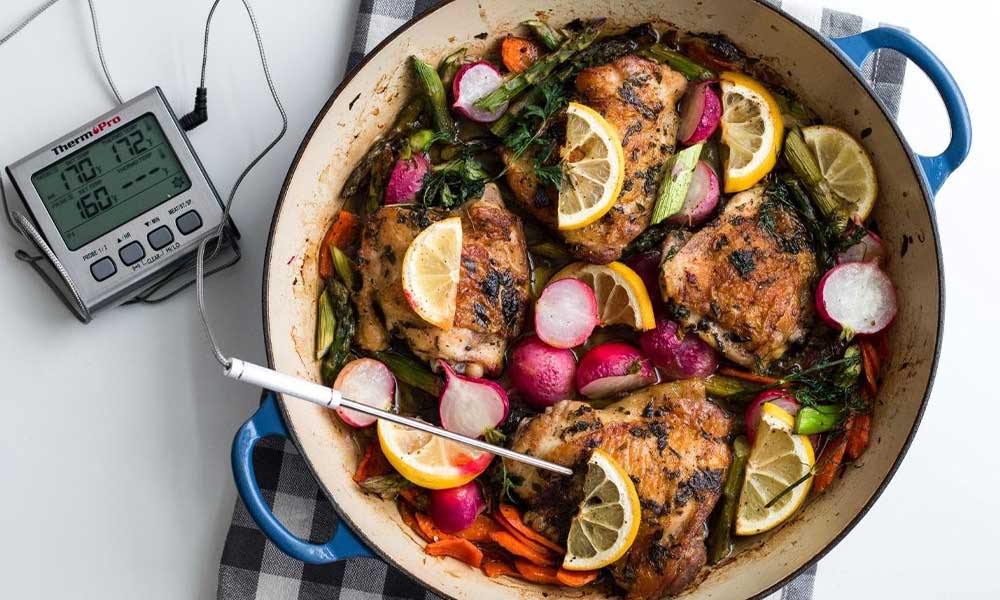Meat and poultry aren’t the only foods to use a food thermometer. All cooked foods must reach a safe internal temperature to prevent the development of food poisoning. After food has been cooked, a food thermometer is also necessary to ensure it is not overcooked.

Temperatures between 40° and 140° Fahrenheit constitute the perishable food “danger zone.”. After two hours, it is no longer safe to eat perishable foods (one hour if the temperature is 90° Fahrenheit or higher). Buffets and potlucks are especially prone to this, as food sits out for extended periods.
There are many types of food cooking thermometers available. Choose the type that’s right for you and make sure to use it every time you cook:
-Dial oven food thermometers used in ovens can remain in place as the food cooks by inserting the needle two to two and a half inches deep into the thickest part. The temperature will be displayed after one to two minutes. For roasts, casseroles, and soups, use this thermometer, but they are not appropriate for light foods.
-It is not recommended to leave instant-read thermometers in food while cooking. Use them at the very end to check if the food is done. Put the stem about two and a half inches deep inside the food. Temperature is read instantly with this thermometer, typically within 10 to 20 seconds. Inserted sideways in thin dishes and used for roasts, casseroles, and soups.
-Grilling thermometers with forks are convenient and can be read within two to ten seconds. The sensor should be inserted fully into the thickest part of the food, at least a fourth of an inch deep.
-Disposable thermometers and pop-up thermometers are designed to be used once only.
In many cases, these thermometers are intended for specific temperature ranges, such as the safe cooking temperature for hamburgers or turkey. When the material pops up or changes color, these can also measure food temperature in five to ten seconds. It would be better to use a conventional thermometer to check the temperature of larger items, like whole turkeys.
Please read the directions on the manufacturer’s food thermometer before using it. To get an accurate thermometer reading, you need to know how far the thermometer should be inserted into the food. Here are some simple steps to ensure you are using a food thermometer correctly:
